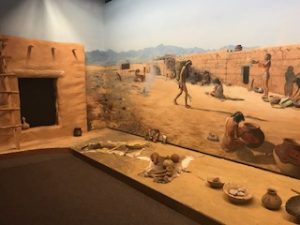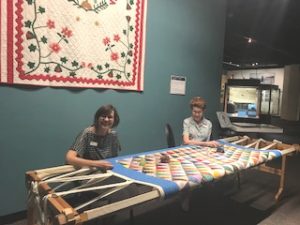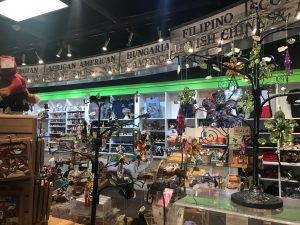
When it is over 100 degrees outside, you look for indoor activities. If you happen to find yourself in San Antonio, Texas on one of those days, be sure to look up the Institute of Texan Cultures on East Cesar E. Chavez Boulevard.
Located within easy walking distance of the Alamo and the Riverwalk. You will enjoy passing through the HemisFair Park and by the Tower of the Americas on your way to the museum.
The museum is filled with tastefully-done displays of different people groups from around the world. I was particularly impressed with the variety of cultures that came together to form the great state of Texas. While I was aware of some groups, such as Native Americans, Mexicans, Spanish and Germans, I was surprised to learn that many other people had immigrated here in the early 19th century as well, such as the Wendish, Swedish and Filipinos.
 The displays are laid out logically in chronological order, beginning with the first humans, who are believed to have arrived in Texas more than 12,000 years ago. It seems they chased some mighty big critters (mastodons, for example) across the Bering Strait Bridge from Asia. Once they arrived on the North American continent, they traveled south into the lower continental regions. Isn’t it amazing what we will do for a good meal?
The displays are laid out logically in chronological order, beginning with the first humans, who are believed to have arrived in Texas more than 12,000 years ago. It seems they chased some mighty big critters (mastodons, for example) across the Bering Strait Bridge from Asia. Once they arrived on the North American continent, they traveled south into the lower continental regions. Isn’t it amazing what we will do for a good meal?
The Institute of Texan Cultures was built in 1967-68 for the World’s Fair, which was held in San Antonio that very year. Primarily a government project, the building was transferred to the University of Texas at San Antonio in 1969. In 2010, the museum became affiliated with the Smithsonian Institute in Washington, D.C.
The volunteer docents are very helpful and knowledgeable. Docent Mary Martinez told me that 25 people groups are recognized in the museum as founders and settlers of Texas. The flags at the front entrance of the building represent many of the countries and cultures represented in the museum.
If you want to research your family roots in Texas, you may do so here as well. The archives, library and photo collections are located on the third floor and are open to the public from 10 a.m. to 3 p.m., Monday through Thursday. The library contains manuscripts, rare books, personal papers, over 3 million historical photos and over 700 oral histories.

Demonstrations of Texan frontier crafts are done daily, such as this one featuring early American quilts. Multiple displays are hands-on and suited especially for children. This is a teacher’s paradise, and indeed much of their traffic is from school groups.
From the beginning of the museum’s collection project, officials traveled to every corner of Texas researching cultures and roots of the state. Personal items from hundreds of families from all over Texas were collected and are now displayed. Remarkably, families were willing to unselfishly share items from their home countries with the museum.
From the moment I entered the museum, I felt that I had been transported into a unique place, where learning history was easy and alive. Video exhibits features women from the “wild west”, who told of their crossing thousands of miles in a covered wagon. Meet Native Americans and Irish settlers. Each person had a personal story to tell, and these accounts are taken from actual true stories.

Where can you purchase Russian stacking dolls and Texas decorated cowboy boots all in one place? Why in the museum gift shop, of course! Be sure to stop by for a look before you go.
![]()
